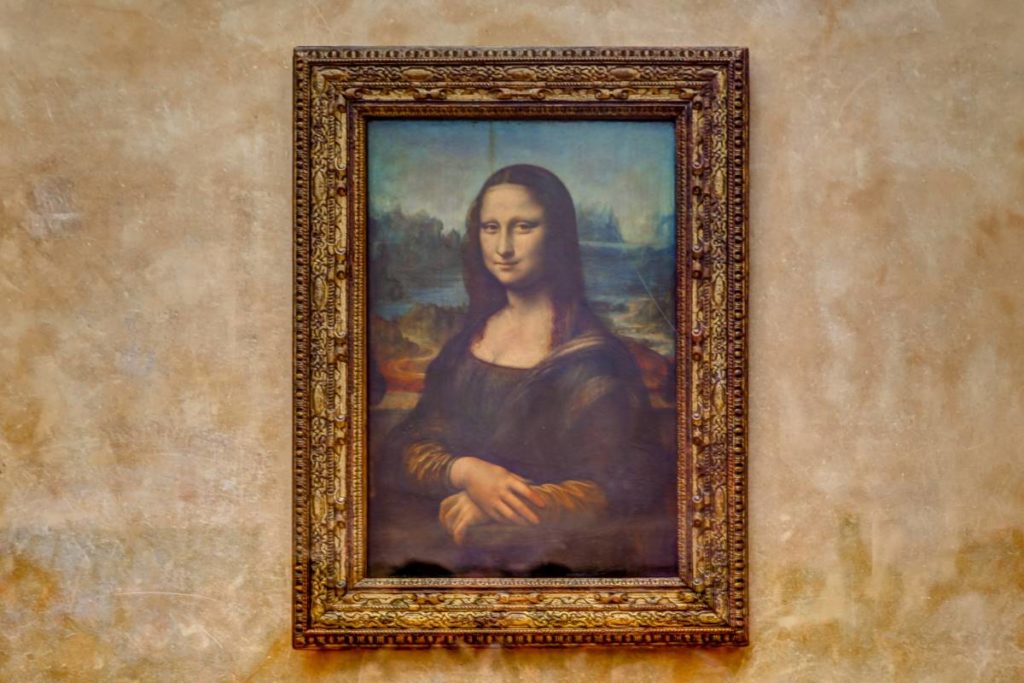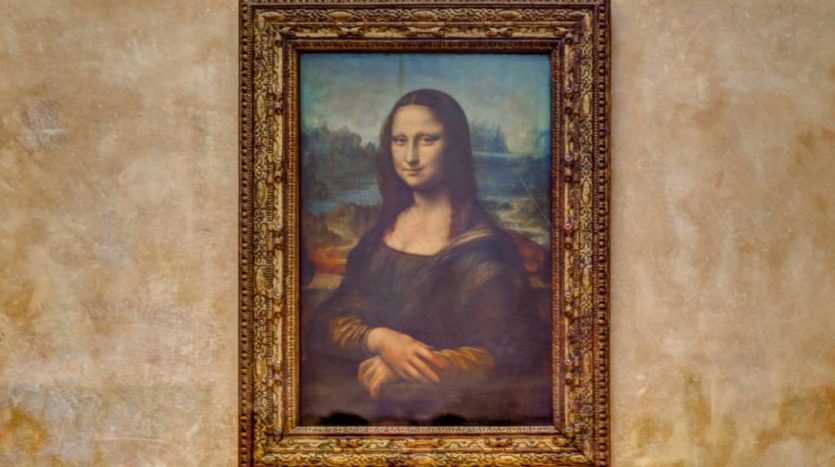The Mona Lisa or Monna Lisa, a Masterpiece of the Italian Renaissance
She’s spilled a lot of ink (or paint), and she’s wowed a lot of people: who hasn’t heard of La Mona Lisa, the world-famous 16th-century painting? Its tale, as well as the story of its creator, continues to captivate art enthusiasts and specialists alike. It is on display at the Louvre Museum, attracting an increasing number of tourists who come to marvel at its beauty and the craftsmanship that went into its production. Zoom in on an artwork that still piques people’s interest.
77 x 53 cm of mystery and fascination
The history of this oil painting is shrouded in mystery. To begin with, the date of its conception: it was most likely carried out in phases, between 1503 and 1506 and maybe even until 1519, according to others. Then there’s the question of Monna Lisa’s identity. Lisa Gherardini, the Florentine wife of Florentine trader Francesco del Giocondo, is reported to have commissioned a picture of his wife from Leonardo da Vinci. Another theory implicates Florentine Republic ruler Julien de Medici: the painted female figure is none other than one of his girlfriends. In any case, Leonardo da Vinci visited the Château du Clos Lucé at the request of François I, bringing La Mona Lisa with him. In 1518, the king took possession of it.
Voncenzo Pruggia stole the artwork from the Louvre in 1911, over 400 years later, and it took two years for it to be restored to the museum. The perpetrator, who is of Italian descent, is reported to have acted in the sake of patriotism. Monna Lisa’s tragedy, on the other hand, will have boosted her worldwide renown and appeal.
Aside from its provenance, the Mona Lisa’s technical features have long piqued the interest of numerous artists. Indeed, Leonardo da Vinci employed extraordinary techniques to produce one of the world’s most studied masterpieces. The photograph is framed in a highly contemporary manner for the period, and the optical techniques give the impression that Monna Lisa is staring at him the whole time. The sfumato method, which consists of superimposing numerous layers of paint and was devised by Leonardo da Vinci, provides for this vaporous aspect and delicate perspective that everyone can notice when viewing the piece.

Leonardo da Vinci : a multifaceted artist
Leonardo da Vinci was born in 1452 in Vinci (Tuscany), the son of a peasant lady and a notary. His paternal grandparents schooled him until he was ten years old. Then his father enrolled him in a “abaco scuola” in Florence (an Italian school whose curriculum mainly focuses on mathematics and algebra). He continued his studies in Andrea del Verrochio’s workshop, where he encountered future notable Italian painters (Botticelli, Le Pérugin, and Domenico Ghirlandaio). When he left the workshop in 1482, he broke into the court and won many painting contracts, allowing him to create his own studio. Leonard de Vinci is a dedicated artist who masters a variety of skills including sculpting, sketching, music, and painting.
He approached painting as a science, analyzing the subject to be painted from many perspectives and sketching it out. The Virgin, the Infant Jesus, and Saint Anne, which brings together three generations in a moment of sharing and love, Saint John the Baptist, who would be the artist’s artistic testament, and The Vitruvian Man, a famous drawing representing the ideal proportions of the human body, are among his key works.
Beyond his skill as a painter, the Renaissance genius’s talent as an engineer was what made him renowned. He views himself as a scientist, engineer, and architect. The artist, who is naturally curious, is fascinated by many parts of science, such as geology, hydrodynamics, astronomy, and anatomy, which help him better comprehend life and the world around him. His lack of university experience allowed him to think freely and put his talent into effect, in contrast to the academicism of his period.
Leonardo da Vinci died in the Château du Clos Lucé in 1519, at the age of 67, leaving behind numerous works and inventions that would be studied and dismantled for decades to come.
The Louvre, a first-rate museum that houses many masterpieces
The stately Louvre houses several of Leonardo da Vinci’s paintings, including the one that intrigues us today. The wealth presently on display at the museum, which was inaugurated in 1793 as the “Central Museum of the Arts of the Republic,” is made up of the collections of the monarchs and subsequently of the republic’s representatives, as well as those relinquished by conquered countries. Until 1803 it was also a training ground for painters.
With 10 million visitors in 2018, the Louvre is officially the world’s most visited museum. The visitor enters beneath Pei’s glass pyramid (completed in 1989) in the midst of the Cour Napoleon and finds a 72,735-square-meter surface show space with 36,000 pieces visible among the 500,000 conserved. It includes pieces from ancient Eastern, Egyptian, Greek, Etruscan, Roman, pictorial, and Islamic art, as well as Western art from the Middle Ages to the Revolution of 1848. The Venus de Milo, The Winged Victory of Samothrace, The Crouching Scribe, and the Raft of the Medusa are among the most renowned masterpieces in the world on display here, in addition to The Mona Lisa.
For the more daring, the museum provides nocturnes, which immerse visitors in a warm ambiance while providing breathtaking and lit views of the palace’s architectural treasures and environs.
Art appreciation does not limit digital innovation, and individuals willing to discover or relearn particular works via virtual reality may expect an engaging experience. Indeed, the Louvre invites tourists to learn more by going as near to the picture as possible – something that should never be tried in reality! The virtual permits feats: the Monna Lisa rises from her painting’s background, while the guide explains the history and methods required to produce it.
Leonardo da Vinci’s work is vast, and studying it may teach you a lot. This avant-garde, as a painter, architect, and engineer, has given us a priceless legacy that everyone can enjoy for what it is, thanks to professionals and museums that enable the maximum number of people to approach and comprehend it in their own unique manner.


